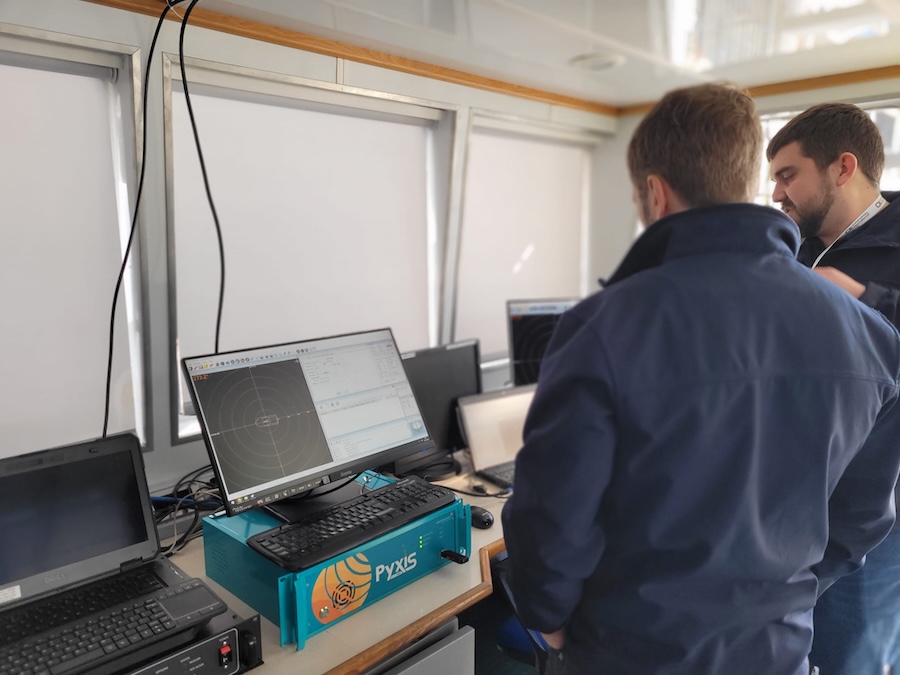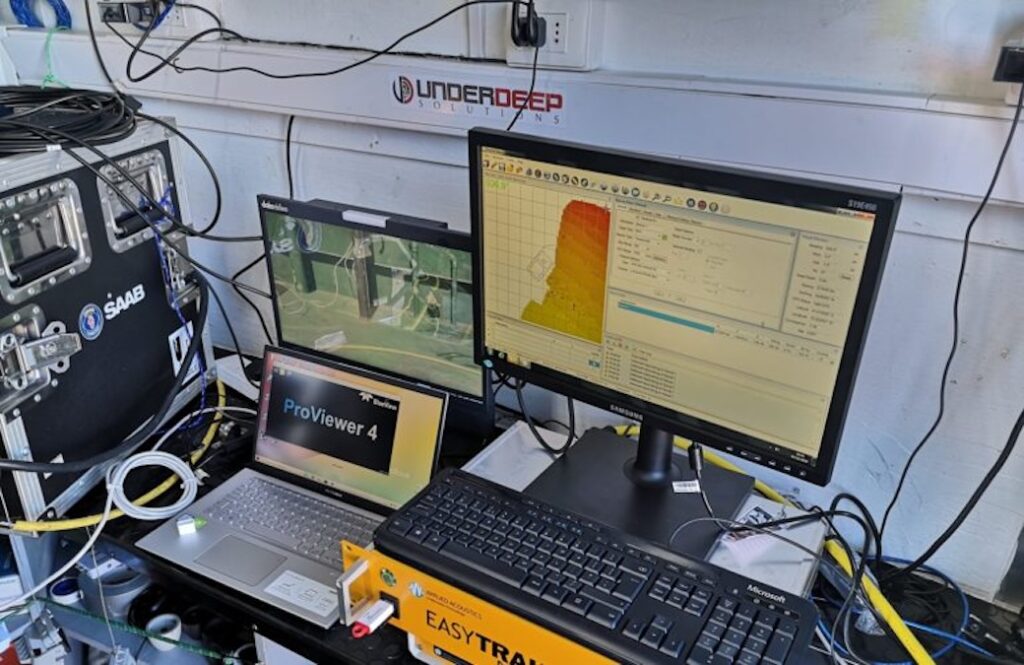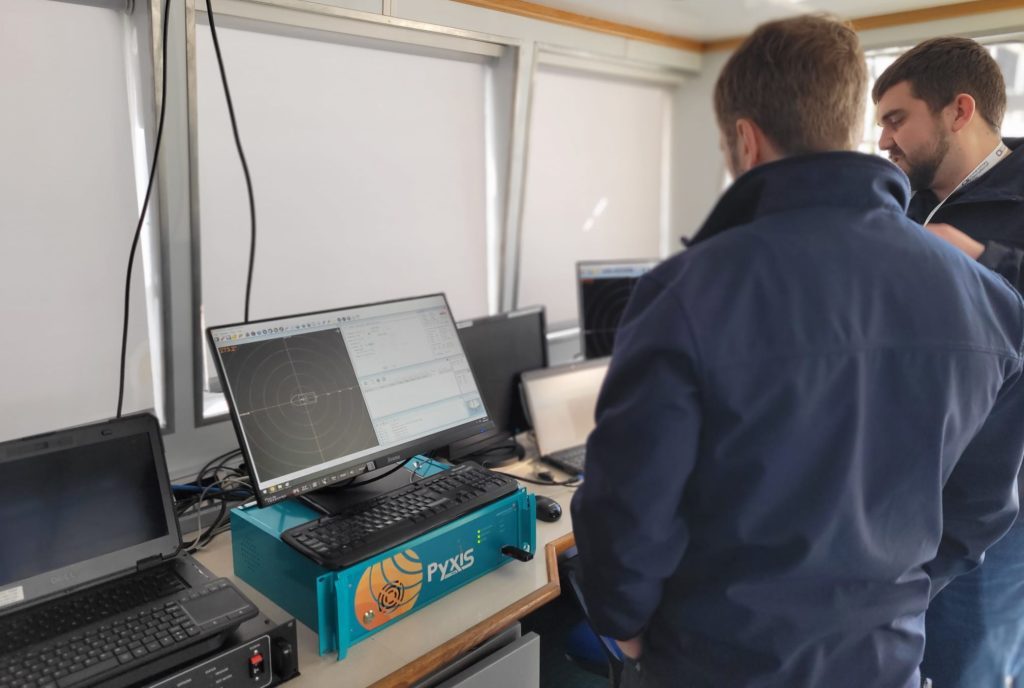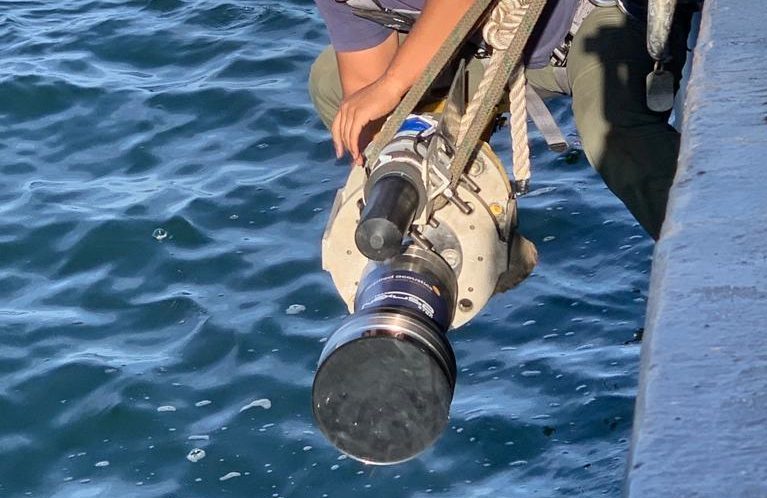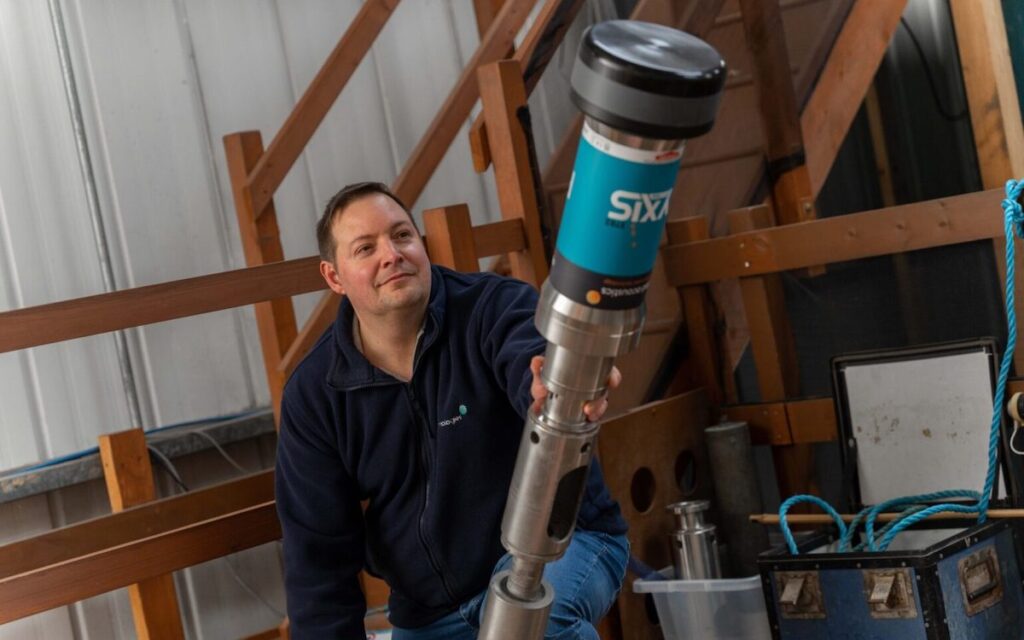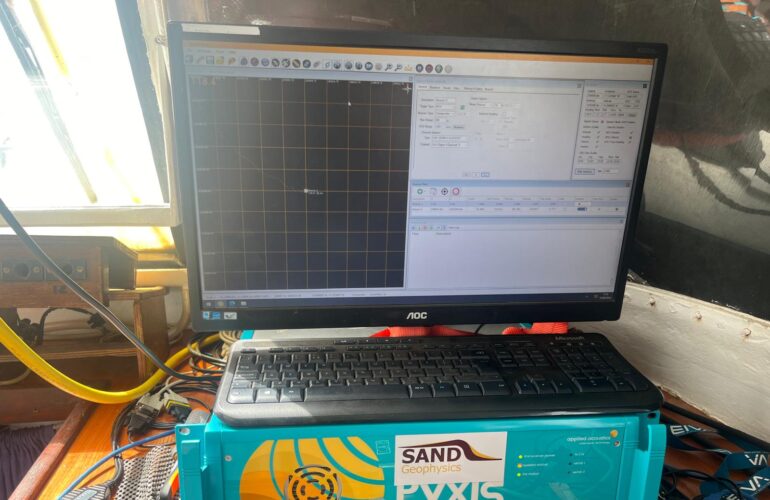Suppliers
Add your company
High-Accuracy Inertial Sensors & Acoustic Positioning Systems for Marine, Maritime & Offshore Applications
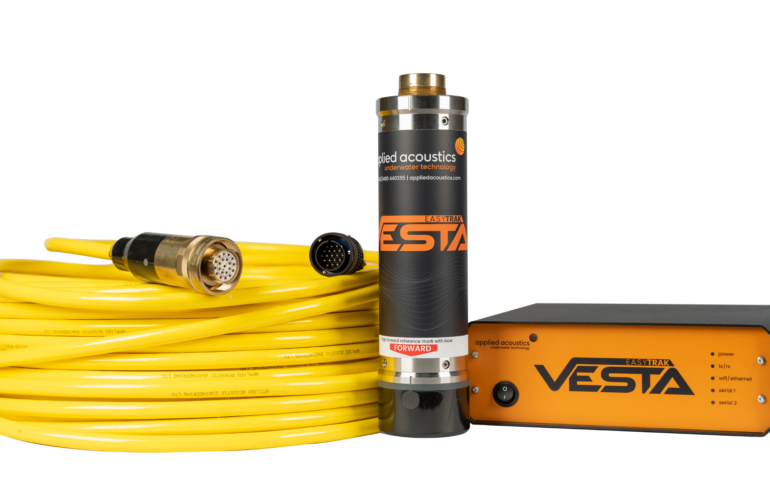
Innovative Subsea & Marine Navigation, Positioning & Survey Solutions
If you design, build or supply USBL Systems, create a profile to showcase your capabilities on this page
Products
USBL Systems
Introduction to USBL Systems
Ultra-Short Baseline (USBL) systems accurately determine the subsea location of assets like ROVs, AUVs, divers, and scientific instruments in commercial marine operations. By relying on the transmission and reception of sound pulses between a vessel-mounted transceiver and a subsea transponder or beacon, a USBL system calculates the target’s position relative to the surface support vessel. This calculation forms a critical link, providing real-time subsea navigation and control across commercial and research marine operations.
The Role of Ultra-Short Baseline Positioning in Subsea Operations
The versatility of the ultra-short baseline system makes it an indispensable tool for engineers and scientists alike. In offshore construction, USBL positioning systems precisely guide equipment during pipeline alignment, structure installation, and deepwater asset placement. In oceanography and survey work, they enable the precise navigation of autonomous platforms collecting geophysical and environmental data.
Additionally, for critical scientific missions, USBL tracking supports repeatable sampling, habitat mapping, and crucial, long-term instrument recovery. Essentially, ultra-short baseline measurement is paramount wherever precise underwater positioning is required without the logistical complexity of deploying a full seabed network.
How USBL Positioning Works
Acoustic Signal Transmission and Reception
At its core, an ultra-short baseline system emits a sound pulse from the transceiver that is instantly received by the target’s transponder. The transponder replies with a return pulse, allowing the system to accurately measure the two-way travel time. This measurement, when paired with the known speed of sound in water, determines the range (distance).
Crucially, the subtle phase and amplitude differences detected across the multiple hydrophone elements within the transceiver array provide the angular information, enabling a precise, three-dimensional (3D) determination of the target’s position.
Triangulation and Measurement
Modern, high-end USBL positioning systems leverage advanced phase-difference techniques to resolve bearing (horizontal angle) and elevation (vertical angle) with sub-degree accuracy. By instantly combining high-fidelity angle-of-arrival and range data, the system computes an instantaneous and continuous position solution relative to the vessel. This sophisticated approach allows the USBL tracking system to dynamically monitor highly mobile targets, even in acoustically challenging environments.
Environmental Influences
The speed of sound in water is a variable, not a constant; it changes based on temperature, salinity, and pressure. These properties, particularly the resulting Sound Velocity Profile (SVP), introduce systematic errors if left uncorrected. To ensure maximum positional accuracy, all high-grade ultra-short baseline system deployments rely on continuous corrections derived from sound velocity profilers or expendable probes.
Comparison with Other Underwater Positioning Methods
While Long Baseline (LBL) systems offer the highest absolute accuracy by referencing fixed seabed transponders, the ultra-short baseline system is preferred for its rapid deployment and superior operational flexibility. Short Baseline (SBL) acoustic positioning systems offer a middle ground but require a known, rigid array geometry.
However, when coupled with Inertial Navigation Systems (INS) or Doppler Velocity Logs (DVL), USBL forms a robust hybrid navigation solution. This integration ensures the system maintains high precision and redundancy, even when acoustic conditions, such as near-surface noise or thermoclines, temporarily degrade the primary acoustic link.
Ultra-Short Baseline System Components & Operation
Core components of an ultra-short baseline acoustic positioning system include:
Transceiver/Transducer Arrays
The USBL transceiver is mounted to the vessel and contains multiple hydrophone elements in a compact, typically circular, array. These elements are manufactured from specialized ceramic materials chosen for their acoustic sensitivity and stability under varying pressure.
Transponder/Responder Units
This subsea unit, often referred to as a USBL beacon, replies to the interrogation. These are depth-rated units selected for a specific frequency band and may also house integrated tilt and temperature sensors for diagnostic feedback. Power efficiency is key for ensuring long-term deployment viability.
Control and Processing Unit
The topside processor is the brain, translating raw acoustic data into range and bearing solutions. It applies real-time motion compensation using inputs from vessel reference systems. These control units seamlessly integrate with navigation and Dynamic Positioning (DP) consoles.
Frequency Bands and Signal Processing
- Frequency Selection: The choice of frequency is a critical engineering trade-off. Lower frequencies (10–30 kHz) support long-range tracking in deep water, although with lower angular resolution. Conversely, higher frequencies (60–300 kHz) deliver superior accuracy and angular resolution at shorter slant ranges and are often used in shallow water operations.
- Spread-Spectrum Technology: Unlike simple narrowband operation, spread-spectrum signaling is vital for improving resilience against interference, vessel self-noise, and multipath reflection. This is essential in challenging or high-clutter acoustic environments.
- Signal Processing Techniques: Advanced systems employ digital correlation, matched filtering, and sophisticated error correction algorithms. These techniques enhance signal integrity, suppress ambient noise, and significantly improve positioning reliability.
Integration with Marine Research Platforms
Vessel-Based Installations
USBL transceivers can be permanently hull-mounted for dedicated vessels or rapidly pole-mounted for temporary survey work. Critical integration with surface systems, specifically high-precision GNSS receivers, Motion Reference Units (MRUs), and gyrocompasses, is non-negotiable. This integration ensures the system accurately compensates for the vessel’s pitch, roll, and heave, maintaining a stable position reference.
Autonomous and Remotely Operated Systems
ROVs and AUVs depend on the ultra-short baseline link for accurate navigation and tracking relative to the surface vessel. Hybrid navigation architectures, combining the high positional stability of INS with the drift-free referencing of USBL, are standard practice, delivering the redundancy and accuracy required for demanding tasks like subsea inspection and mapping.
USBL Communication
In addition to pure positioning, many acoustic positioning systems can function as two-way acoustic modems. This feature enables reliable communication, transmitting telemetry data, status messages, and sensor readings. While data rates are typically modest, this link is sufficient for crucial command-and-control functions in autonomous and remotely operated operations.
Key Applications of Ultra-Short Baseline Systems
The advanced capability of the ultra-short baseline acoustic positioning system drives its use across multiple sectors:
- Subsea Construction: High-accuracy guidance for the installation of large subsea structures, manifolds, and risers.
- Pipeline and Cable-Laying: Continuous positional feedback ensures strict adherence to the planned route and simplifies post-lay survey operations.
- ROV and AUV Intervention: Precise ROV USBL tracking for complex inspection, maintenance, and intervention tasks.
- Oceanographic Surveys: Critical synchronization of acoustic positioning with towed sonar, sensor platforms, and sampling equipment.
- Search and Recovery: Rapidly and accurately locating lost high-value equipment, wreckage, or instruments in both shallow and deep waters.
USBL Calibration Procedure
Accuracy is determined by the slant range, acoustic geometry, vessel motion, and ambient water conditions. While commercial systems typically achieve 0.1–0.5% of slant range accuracy, survey-grade units represent the gold standard. Under ideal, highly controlled conditions, these high-end systems can achieve centimeter-level accuracy (e.g., 5-10 cm at a range of 1000 m), which is essential for metrology and precise construction tasks.
Achieving optimal performance necessitates rigorous calibration. This involves physically aligning the USBL frame to the vessel’s primary reference points, validating all offset measurements, and performing controlled tests, such as patch calibration, to verify positional results against ground truth.
Providers of USBL Technology
The ultra-short baseline sector features a blend of established marine technology leaders and specialized acoustic firms, all competing on accuracy, resilience, and integration:
- Teledyne Marine: Provides a wide portfolio of acoustic solutions, covering both scientific and commercial applications.
- Applied Acoustics: Known for developing rugged, compact, and cost-effective USBL tracking systems tailored for coastal survey, environmental research, and smaller-class AUVs.
These leaders continue to push the boundaries of environmental resilience and seamless ultra-short baseline integration, significantly advancing the precision and reach of subsea operations globally.









